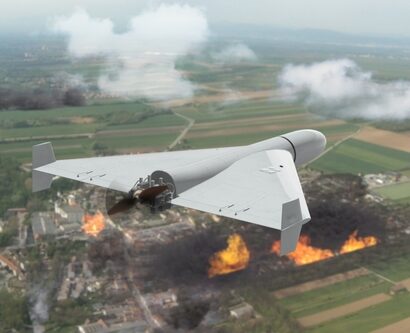Abstract: Yemen’s Ansar Allah Shia (commonly known as the Houthis) have claimed the use of a hypersonic missile in an attack on the container ship MSC Sarah V. However, since the beginning of the Red Sea crisis, the Houthis have made numerous claims; nevertheless, most are unverified and seem to be expressed for propaganda purposes. Claims of a hypersonic attack come with a video which, upon careful analysis, undermines claims of hypersonic capability. A detailed technical assessment of the weapon used and flight path analysis shows that the hypersonic claim is hype at best. Instead, the Houthis seem to have used a ballistic missile obtained from Iran, as has been the case always.
Problem statement: What are the actual performance capabilities and features of the Houthi-claimed hypersonic missile attack on container ship MSC Sarah V?
So what?: Houthis attacks have seriously disrupted international shipping lanes in the Gulf, and claims of hypersonic weaponry need to be verified so that effective countermeasures can be taken. Attacks in the Arabian Sea can impact the maritime routes of the vital energy-importing nations in the Asian and South East-Asian region. Therefore, after careful investigation of Houthi weapon capabilities, the U.S. and its allies should deploy effective measures to disable and counter such weapon systems. At present, the U.S. and its coalition partners are mostly focusing on intercepting Houthi Anti-ship missiles and drones. The ballistic missile interception strategy has to be deployed adequately.

Source: shutterstock.com/Mohammed al-wafi
Domestically Developed Hypersonic Ballistic Missiles?
On June 26, 2024, reports emerged that a container ship, MSC Sarah V, was attacked near the northeast of Yemen’s Socotra islands by the Houthis. The Houthi military spokesperson claimed the attack with the use of a new ballistic missile and released a video in this regard.[1] Houthis claimed that the missile was a domestically developed hypersonic ballistic missile, the Hatem-2, which had been used for the first time.[2] In addition, this is the first time that a non-state actor has claimed to use hypersonic weapons. In late January 2024, the Houthis claimed that they attacked USS Lewis B. Puller, a U.S. Navy mobile base in the Gulf of Aden, without offering any evidence, which a U.S. defence official later denied.[3] In May 2024, the Houthi spokesperson claimed to have attacked USS Mason with several ‘appropriate naval missiles’, but the same was intercepted successfully as per U.S. officials.[4] Similarly, in June 2024, the Houthis again claimed to have successfully attacked the U.S. aircraft carrier USS Dwight D. Eisenhower, which was later deemed incorrect by U.S. officials.[5] There is a pattern of unverified and exaggerated claims by the Houthis in the current Red Sea crisis.
Houthis claimed that the missile was a domestically developed hypersonic ballistic missile, the Hatem-2, which had been used for the first time.
Decoding the Missile Attack Video
After the attack on MSC Sarah V, the Houthis released a video of the Hatem-2 missile on their official website and social media handle. The video is around 2 minutes and 18 seconds, during which the missile is shown flying for only 32 seconds. The missile payload section is shown with fins attached at the bottom half. Roman numbers are visible on the warhead and fins. The radome is seen joined to the second lower stage and the main body. The missile is seen attached and erected on a transport erector launcher (TEL), which itself is not clearly seen. The entire location of the missile has been blurred except the missile. At around 50 seconds, the missile is fired with a higher inclined angle and follows a typical ballistic missile trajectory.[6]

Source: Ansarollah.com
Several additional observations can be deduced or verified from the video. First, although the missile is fired, the target and whether it was struck are unknowable. Secondly, the entire video is blurred intentionally to hide the local topography, which can suggest that this could be a test launch and to avoid unnecessary identification of the location of the spot through clear video footage. Hiding the local topography can prevent any counterattacks. Thirdly, missiles must be launched close to the coast to gain maximum range to target any ship travelling at a greater distance due to the current Red Sea crisis. Yet, no seashore is visible. The blurring of the video raises question marks as per the above aspects.
Assessment of Hatem-2 Missile
As per the Ansarollah group, the Houthis used a Hatem-2 hypersonic missile, which they claim was domestically manufactured. However, this is likely incorrect because the Houthis lack the scientific capacities, dedicated test labs, as well as research and development acumen to develop such weapons for which scientifically evolved nations are spending billions of dollars worldwide. As per the group, Hatem-2 is allegedly capable of hypersonic speed, runs on solid fuel, has an intelligent control system, and has high precision and manoeuvrability. Further, they also claimed that the missile flew a distance of 450 km to hit MSC Sarah V.[7]
As per a report released by the Defence Intelligence Agency of the USA in February 2024, the Hatem shares similar features with the Iranian Kheibar Shekan Medium Range Ballistic Missile (MRBM), which has a claimed payload carrying capacity of 500 kg and a range of 1450 km.[8] Instead of being domestically produced, the Hatem-2 is probably manufactured with Iranian support. The claim of Hatem-2 being hypersonic is likely based on the fact that ballistic missiles achieve speeds of around 24000 km/h or Mach 20 when descending towards the earth.[9] So, in general, every ballistic missile can achieve hypersonic speed at the terminal phase, irrespective of its range—this does not make a ballistic missile ‘hypersonic’ in the modern sense of the term.
Instead of being domestically produced, the Hatem-2 is probably manufactured with Iranian support.
Generally, few notable differences exist between a ballistic missile and a hypersonic missile. Initially, a ballistic missile is powered by a series of rocket motors fired in stages (boost phase and mid-course phase), and after each stage is burnt out, it gets separated. The next stage is powered on till the missile warhead starts descending. During the descent (terminal phase) towards its intended target, the warhead ballistic trajectory remains unpowered and is normally under the force of gravity. On the other hand, hypersonic weapons remain powered throughout their flight, meaning they are not powered in stages but powered by scramjet engines till they reach their target.
Hypersonic missiles are of two types- hypersonic cruise missiles (HCM) and hypersonic glide vehicles (HGV). Both the HCM and HGV attain hypersonic parlance due to the nature of their propulsion mechanism, which provides them access to abundant oxidiser (atmospheric oxygen). Their fuel management system keeps them powered throughout their total flight time. Additionally, both utilise the manoeuvrability capability, which is not observed in any ballistic missile following a predetermined trajectory. The manoeuvrability is achieved by using aerodynamic design and features like foldable wings and thrust vectors of both HCM and HGV. An HGV design is mostly similar to a space shuttle, which also enters and glides through the earth’s atmosphere with high Mach speeds. An HCM initially uses a rocket booster to achieve hypersonic speeds, after which they use an air-breathing scramjet engine to maintain hypersonic speed throughout their flight and remain all-powered.
On the other hand, HGVs use aerodynamic lifts to allow a re-entry vehicle (payload) to manoeuver under guided flight conditions within the atmosphere.[10] A typical design of an HGV is wedge-shaped with small wings like the Russian Avangard. The HGV itself is carried to a suborbital apogee through a ballistic missile.[11] There is a clear distinction between a ballistic missile, HGV, and HCM. As per the video released by the Houthis, it can be assessed that Hatem-2 is an MRBM and not any HGV or HCM, as the dimensions, shape, and structure do not denote any of the characteristics of hypersonic weaponry.
Exaggerated Claims
Finally, one has to analyse the claim that MSC Sara V was hit at a distance of 450 km. Since the Hatem-2 velocity is not reported, its minimum velocity can be taken to be at Mach 5 (1,715 m/s), the launch angle is approximately 75 degrees, and the launcher height above ground is 3 metres. Using these parameters, one can calculate the approximate total range of the missile to be only 150 km and the total flight time as 338 seconds. Mach 8 (2,744 m/s) is also the maximum speed of Iranian Kheibar Shekan from which Hatem-2 is derived, and this range is around 384 km, which is well short of 450 km.[12] This assessment indicates that the current Houthi hypersonic missile capabilities are exaggerated and are entirely incorrect. The Iranians could have supported the Houthis in manufacturing these MRBMs. Since the MRBMs are vulnerable to exo-atmospheric interception, the U.S. and its allies should deploy countermeasures to track these in real time using satellites and intercept these to prevent any further casualties to international shipping lines.
Till now, the U.S. and its coalition partners were focused on countering the Houthi anti-ship missiles and drones, which mostly follow a low-altitude cruise trajectory, and interception was done using short-range air defence and close in weapon systems. However, for a ballistic missile, which flies at a higher altitude, the interception strategy will vary as the target for interception will have a higher predetermined trajectory and can be easily intercepted at exo-atmospheric altitude. The U.S. and its partners illustrated such capabilities in the past to defend Israel against the Iranian ballistic missiles during the April 2024 attacks. Hence, the deployment of BMD-capable assets like the Aegis ships, which operate in the European seas and near the Korean peninsula, will provide the U.S. with the means to prevent Houthis from carrying out such attacks closer to the Red Sea.
Ajay Kumar Das is pursuing an MA in International Relations, Security & Strategy from Jindal School of International Affairs (JSIA), Jindal Global University (JGU), Haryana, India. He has published articles in the Forum for Integrated National Security, Forum for Global Studies, The Diplomatist, and the Centre For Joint Warfare Studies. His areas of interest are National Security, Air Power, Maritime Security, and Geopolitics. The views contained in this article are the author’s alone and do not represent the views of JGU.
[1] Jon Gambrell, “Ship Attacked in Red Sea in Latest Maritime Assault Carried out by Yemen’s Houthi Rebels,” AP News, June 27, 2024, https://apnews.com/article/yemen-houthi-rebels-red-sea-attacks-israel-hamas-war-e485b2a54550c96aa82cda5ef96f06d0.
[2] Huaxia, “Yemen’s Houthi Group Claims Home-Made Hypersonic Missile Attack on Ship in Arabian Sea-Xinhua,” Xinhua, June 27, 2024, https://english.news.cn/20240627/b6da027518f946ecacc99bfaea564410/c.html.
[3] Jon Gambrell, “Yemen’s Houthi Rebels Say They Attacked a US Warship without Evidence. An American Official Rejects the Claim”, AP News, January 29, 2024, https://apnews.com/article/yemen-houthi-us-attack-red-sea-d137bfd5a328601fc0214a9ae56b4870.
[4] Jana Choukeir & Andrew Mills, “US Says Warship Mason Intercepted Houthi Missile, Vessel Destiny Untouched,” Reuters, May 16, 2024, https://www.reuters.com/world/middle-east/yemens-houthis-say-they-targeted-us-warship-vessel-destiny-red-sea-2024-05-15/.
[5] Phil Stewart,“Houthi Claim of Attack on US Aircraft Carrier False, US Officials Say,” Reuters, June 23, 2024, https://www.reuters.com/world/middle-east/houthi-claim-attack-us-aircraft-carrier-false-us-officials-say-2024-06-22/#:~:text=WASHINGTON%2C%20June%2022%20(Reuters),two%20U.S.%20officials%20told%20Reuters.
[6] “Details of the Hatem 2 Hypersonic Ballistic Missile – Revealed for the First Time and Footage of Its Launch on the Israeli Ship MSC SARAH V in the Arabian Sea,” MMY News, June 26, 2024, https://www.mmy.ye/320107/.
[7] “Yemen’s Army Unveils ‘Hatem 2’ Hypersonic Missile,” 2024, Ansarollah Group, June 27, 2024, https://www.ansarollah.com.ye/archives/686744.
[8] “Iran Enabling Houthi Attacks Across the Middle East,” Defense Intelligence Agency of the USA, February 2024, https://www.dia.mil/Portals/110/Documents/News/Military_Power_Publications/Iran_Houthi_Final2.pdf.
[9] “Fact Sheet: Ballistic vs. Cruise Missiles,” The Center For Arms Control And Non-Proliferation, n.d, https://armscontrolcenter.org/wp-content/uploads/2017/04/Ballistic-vs.-Cruise-Missiles-Fact-Sheet.pdf.
[10] “Fact Sheet: Hypersonic Weapons,” The Center For Arms Control And Non-Proliferation, November 15, 2023, https://armscontrolcenter.org/fact-sheet-hypersonic-weapons/.
[11] Missile Defense Project, “Avangard,” Missile Threat,” Center for Strategic and International Studies, January 03, 2019, last modified April 23, 2024, https://missilethreat.csis.org/missile/avangard/.
[12] Stephen R. Schmitt, “Ballistic Trajectory: 2D Calculator,” n.d, http://www.convertalot.com/ballistic_trajectory_calculator.html.




